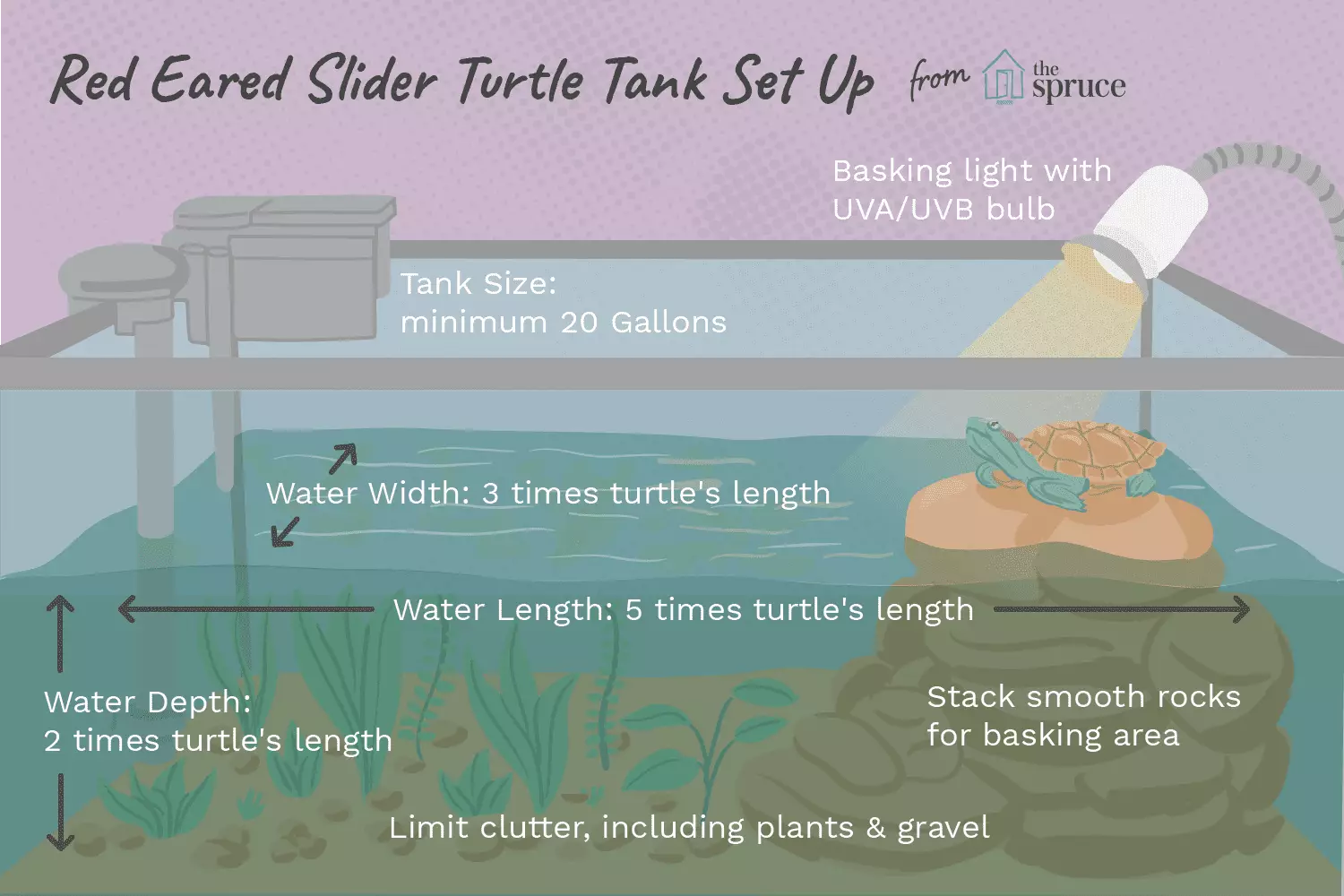While red-eared slider turtles (Trachemys scripta elegans) are often viewed as simple pets, their care requirements are nuanced and should not be overlooked. Understanding their natural habitat and lifestyle is crucial to replicating an environment that promotes their health and longevity. This article explores the foundational needs of red-eared sliders, from tank setup to health considerations, ensuring that pet owners can create an optimal living space for their aquatic companions.
Red-eared sliders are semi-aquatic turtles, which means they thrive in environments that replicate their natural habitats—bodies of water with access to basking spots. To mimic this setting, it is imperative to invest in an appropriately sized aquarium or aquatic habitat. A general guideline is to allocate 10 gallons of water for each inch of the turtle’s shell length. Thus, a young turtle measuring just a few inches necessitates a minimum of 20 gallons of space; as they mature and can reach sizes of 10 to 12 inches, larger tanks—ranging from 40 gallons or more—become necessary.
Basking is not merely a display of leisure; it is essential for the health of red-eared sliders. This activity allows them to regulate their body temperature and absorb vital UV rays that facilitate calcium metabolism. A well-designed habitat, complete with a basking area made from flat rocks or plastic docks, will ensure the turtles can dry themselves fully after swimming. This setup prevents health issues that arise from prolonged exposure to dampness, including shell softening and respiratory infections.
The layout of the turtle tank should favor both swimming and basking, implementing a design that is not overly complicated to maintain. The water depth should be at least twice the length of the turtle, ensuring that red-eared sliders can swim freely without risk. In contrast, the basking area requires a gradient that allows turtles to climb out of the water easily. Smooth surfaces, like rocks or commercial docks designed for turtles, should be utilized so the turtles can access basking spots safely.
To maintain a clean environment, owners must ensure that the tank is not cluttered with decorative items that could potentially harm the turtles or complicate cleaning. Red-eared sliders are notorious for uprooting plants, so if you wish to introduce greenery, consider artificial options or ensure they are well-secured. Additionally, using larger rocks and driftwood can provide both aesthetic appeal and practical use, giving turtles places to rest.
Maintaining optimal water quality is foundational to the well-being of red-eared sliders. These turtles produce a significant amount of waste, emphasizing the need for a robust filtration system. Choosing a filter rated for at least double the tank’s volume will manage this waste effectively. Even with filtration, regular maintenance is necessary; a minimum of 25% water changes weekly, paired with thorough cleanings once a month, is advisable.
Water temperature is another critical component. Ideally, the aquarium should maintain a temperature range between 74°F and 78°F, while the basking area should reach between 90°F and 95°F. A submersible heater can keep the water warm, designed in a way that turtles cannot damage it. Additionally, ultraviolet light sources are vital for providing the necessary UVB rays, facilitating your turtle’s health and appetite.
Nutrition plays an equally integral role in the health of red-eared sliders. These turtles are omnivorous and require a balanced diet consisting of commercial turtle pellets, leafy greens, and occasional protein sources, such as worms, crickets, and small fish. It is vital to avoid overfeeding, as turtles are prone to obesity, which can lead to a host of health issues.
Feeding in a designated area separate from the tank can also minimize mess and lessen the filter’s burden. Through strategic feeding habits, you can foster a healthy environment that promotes growth without the risk of contaminating the living space.
When new pet owners set up habitats for red-eared sliders, common mistakes often arise. A prevalent issue is selecting an aquarium that is too small. It is vital to ensure enough space for the turtle to swim comfortably and engage in natural behaviors. Should you have any doubts about tank size, opting for a larger tank can prevent many complications later on.
Another concern is the presence of gravel in the substrate. While decorative, smaller pebbles can lead to accidental ingestion, resulting in serious health issues. A far safer alternative is a bare-bottom tank or larger rocks that cannot be swallowed.
Red-eared slider turtles can be fascinating and rewarding pets, offering years of companionship and enjoyment. However, their care requires a dedicated commitment, from providing an adequate environment that meets their natural needs to maintaining proper health and nutrition. By investing time and resources into creating the perfect habitat, pet owners can ensure their red-eared slider thrives, living a long and healthy life for many years to come.

